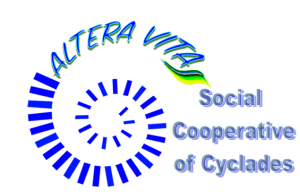MODULE 6: Leadership and organization.
In this block, it is proposed as a means of understanding it from two perspectives: on the one hand, from the trainer and the adults and on the other, from the adults with their environment.
When we delve into the analysis of the determination of effective leadership and the different optimal processes for improving the learning outcome, we are going to find the interaction of other people or situations that influence us directly.
In this notion, the influence within the organization is understood more as the result of the combination of different elements as it happens in the dance, which is necessary for two people or more to work in a coordinated way to give rise to a single, coherent entity and harmonious. Therefore, each element displaces and integrates competencies that it has in order to receive what it does not have. It is wonderful to see that each person assumes and distributes leadership to achieve a global goal that is superior to the individual goals that each person has at a given moment.
The classroom or space has gone from a hierarchical and structured vision to a more horizontal, less individualistic and less structured model, framed in a knowledge economy, studies of leadership in educational or social organizations focus on a model of a distributive nature in leadership and, essentially, in practice as a faculty of the organization.
We rely on different conceptualizations of a distributive leadership approach, based on the combination of aspects of distributive cognition, activity theory and analytical dualism.
The meaning of the leader, from the distributive vision, is not going to focus on the maximum person in charge of the organization as the teacher would be in the classroom, but it is dispersed towards each and every one of the people who can appear in an educational centre, classroom or dance group. Thus, the function of leadership is based as a start on the formal structure so that from that position it distributes the needs of the organization so that others and others acquire that responsibility during the development of their objective or goal (Anderson, 2012; Crawford, 2012; Spillane, 2006; Spillane, Diamond, and Jita, 2003).
We will understand the distributive leadership approach as an accumulation of practices for determining goals and processing a potential influence "by subjects at each and every one of the different levels, rather than the result of the personal composition and particularities of people in the most top of the organization” (Fletcher and Kaufer, 2003). From the point of view of the authors Leithwood and Riehl (2005), Murillo (2006), Spillane (2006), and Harris (2009, 2012a), it resides in the sense of organization, which focuses on transferring power and influencing to converge in shared intentions. Leadership becomes a resource of the organization itself that allows for maximizing and developing of the qualities and contributions of each person. Students are the main axis of leadership.
The importance of this leadership will be found in the construction of an environment that allows the use of this model of relationships between the members of the work or learning team. With which the teacher or facilitator of the group must be an important part in the creation of confidence, reduction of the managerial ego and self-knowledge of Weaknesses, Threats, Strengths and Opportunities, giving rise to an assertive approach to power.
The implementation of a model of distributive leadership in the course plus an approach of full attention and search for self-knowledge and that of others generates an exponential development of the effectiveness of learning.
In Dance, the confidence in the one who leads you shows us the confidence in the one who accompanies you in the dance, as a way of distributing leadership, the other party being responsible for its use. For this reason, Dance will allow us to create models of future leaders where they can understand and experience that trusting, feeling and being as each one is, will be the basis for the development of a more just, equal and inclusive society.
